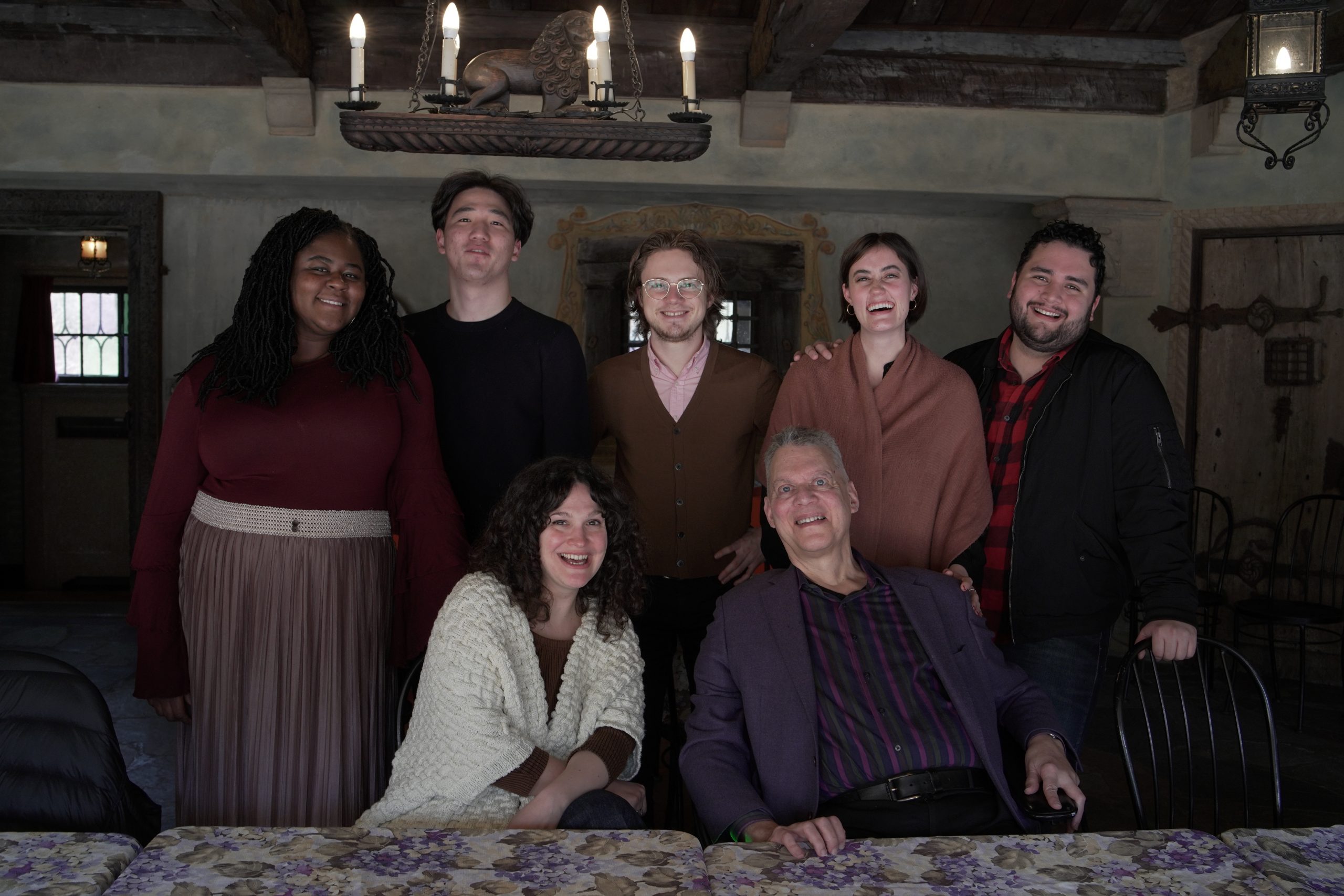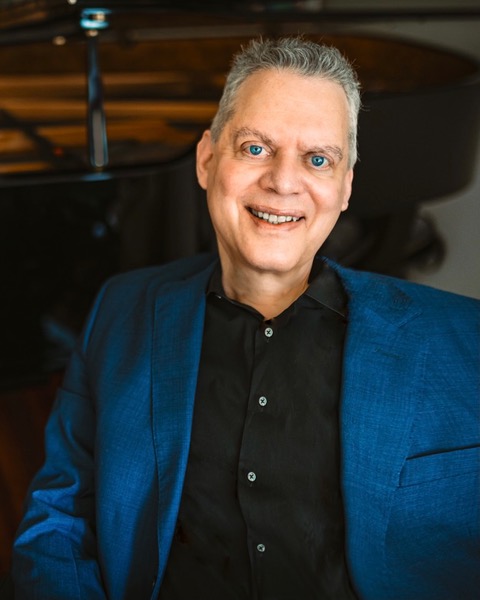When I was a child, my favorite part of every lesson was the last five minutes when I got to play duets with my teacher. We’d rip through Schubert’s Marche Militaire or the four-hand piano reduction of Mozart’s Jupiter Symphony, and I was in heaven. Sure, I liked playing my solo pieces well enough, but I really sprang to life the minute I was part of a duo. Today’s program, Love Songs in 176 Keys, was born out of that love for piano duets: four chapters, each one introduced by a four-hand overture.
In 2014, before the sixth season of Vocal Rising Stars, Caramoor asked me to enlarge the residency to include a pianist alongside the quartet of singers. Initially I was leery about having another musical mouth to feed during an already-pressured week, but I quickly found that I loved working with younger pianists who were entering my collaborative profession. We’ve been blessed with a series of wonderful keyboard players over the ears, all of whom have gone on to distinguished careers in music—at major opera houses, on conservatory faculties, and of course, on the recital stage.
Today I’m joined by my Associate Director, Bénédicte Jourdois, a masterful pianist and a vocal coach touched with genius; and our apprentice, Francesco Barfoed, a young man with a poet’s sensitivity for the keyboard. After so many months playing the piano in isolation during the pandemic, it is a special luxury to have them as musical partners.
The concert’s title, Love Songs in 176 Keys, goes on to specify Four Hands (I think we covered that), Four Voices (the usual spectrum), and Four Cultures. Ah, but which cultures? It didn’t take too long to decide. Brahms’s Liebeslieder Waltzes, written for four voices and four hands, was a sine qua non; with Bénédicte Jourdois on board, we’d certainly want a group of French songs; and with me on board, a selection of Spanish songs—one of my passions. And to end the show, a selection of American songs for our American audience. It has also been wonderful to introduce that repertoire to our Korean and Ecuadorean singers—and our Danish pianist.
Some of the music on the program belongs to the standard repertoire—not just the Brahms waltzes, a perennial joy, but all four piano duets (by Dvořák, Bizet, Granados, and Gershwin), each of them beloved and iconic.
Many of the song composers will also be familiar to concert-goers—Francis Poulenc (Dialogues of the Carmelites), Cy Coleman (Sweet Charity), Gabriel Fauré (Pavane), Darius Milhaud (Scaramouche), Arthur Schwartz (“Dancing in the Dark”), Stephen Sondheim (A Little Night Music), and John Corigliano (The Red Violin). Of course, in true NYFOS style, the pieces we’ve chosen come from the “hidden gem” category—even Bénédicte, an avowed Poulenc-maven, had never heard his lovely duet “Colloque” until it made its way onto our playlist, nor had she ever encountered Milhaud’s “jazz-shimmy” “Caramel mou.”
The rest of the composers might benefit from some introduction. The chansonnier Serge Gainsbourg was a superstar in France, but he is less well known in America. Few of his songs have been translated, unlike those of his Belgian contemporary Jacques Brel, who became famous in America through a long-running off-Broadway revue of his songs. At home, Gainsbourg was considered the most important songwriter of his time, and he also made his mark as filmmaker and actor. Above all, Gainsbourg was a powerful lyricist, scandalous and provocative. His 1963 song “La Javanaise” topped the French charts.
Albert Roussel spoke a musical language unlike anyone else. He spent his early years in the French navy and was able to hear indigenous music all over the world. These sounds went on to permeate his compositional vocabulary, particularly the modes and instruments of Asia. Roussel’s mélodies often use jangly, acerbic dissonances and odd clusters—impressionism etched with needles, not soft brushes. Take “Sarabande,” written in 1919, an elegant song about an outdoor tryst, set to an insistent, discordant motif in the minor mode. The poem is tender, while the music is prickly, somewhat unsettling. The quirky combination of sweetness and roughness makes for a very erotic song.
It was a special pleasure to introduce my young cast to the Spanish composers on the program. Joaquín Turina was the most familiar name for them—a couple of his splashy song cycles typically make the rounds of conservatory recitals. Turina knew how to supply singers and pianists with colorful, almost cinematic music. He’s the go-to guy for any soprano or tenor with an easy upper register and a bit of moxie. Turina was born in the south of Spain—Seville—which is the most Arabic part of the peninsula. You can always hear the Andalusian roots of his music.
Eduardo Toldrà and his student Xavier Montsalvatge are Catalan musicians, and the elegant refinement of their songs is a testament to their Barcelona roots. In the early years of the twentieth century, Barcelona became a hotbed of Spanish creativity, giving birth to several generations of significant artists. Eduardo Toldrà was among them, an important leader in his country’s development as a center for classical music. While he helped build Spain’s first major orchestras, he himself was a master of intimate musical forms. His best songs have an ethereal glow that has endeared him to me—and to generations of listeners.
Xavier Montsalvatge is less easy to categorize. During a career that spanned 60 years he dabbled in a gamut of styles—polytonality, electronic music, ethnomusicology. I think of him as the Picasso of music, always open to the latest influences, and yet always true to himself. But the song on today’s program, “Paisatge del Montseny,” reveals the true core of Montsalvatge’s art: warm and lyrical, and imbued with his unique blend of musical spice—touches of French impressionism and hints of Arabic modes.
Jesús Guridi came from the Basque country and wrote much of his vocal music in his native tongue. Maybe that’s the reason it’s so seldom heard abroad: the Basque language is a nearly insuperable challenge for non-natives to translate and understand. Luckily, Guridi did write a couple of user-friendly song cycles in Castilian, including Seis canciones castellanas, the source of “Cómo quieres que adivine.” It is a devilishly clever song, with a deceptive rhythmic pattern—it’s written in ⅜ time, but the accent is almost never on the first beat of the measure. The catchy opening tune is interrupted by a pair of surprising Moorish-inflected interludes, emerging like an unexpected gold tooth in a smile.
Zarzuela—Spanish operetta—dominated the Iberian peninsula for decades, particularly in Madrid. These popular theater pieces came in as many genres as TV shows: comic one-acters and swashbuckling full-length romances; period pieces and modern dramas; stories about country life, city life, and royal courts. The Spanish public was mad for zarzuela, and it became an industry—the sure-fire way for a talented composer to launch a career in music. Among the genre’s brightest lights was Federico Moreno Torroba, a prolific musician who eventually became the director of a touring zarzuela company. Two of his headliners were Plácido Domingo’s parents, and little Plácido went along for the ride during their sojourns in Mexico and South America. Luisa Fernanda was one of Moreno Torroba’s biggest successes, and the duet “Caballero del alto plumero” gives you a taste of the perennial appeal of his music.
NYFOS was lucky enough to premiere Gabriel Kahane’s The Memory Palace, a compilation of five of his early songs. “Merritt Parkway” is the third song in the cycle. Gabe described those pieces as “the beginning of my finding a musical language that I felt that I could speak. It is like my Opus 1.” Its musical idioms straddle blues, German art song, and an array of 21stcentury styles blended into something unique, original, and emotionally complex. Gabe was inspired by a quote from the Hungarian avant-garde composer György Ligeti: “Anything that is truly new is just two extant things that haven’t been combined before.” To wit: “Merritt Parkway,” a haunting tune that blends the gravity of Robert Schumann with the relaxed informality of the American Songbook.
Love Songs in 176 Keys doesn’t quite tell 176 love stories. Still, it manages to conjure a surprising range of encounters: charming nineteenth-century courtship rites (The Liebeslieder Waltzes), a promising romance that fizzles all too quickly (“La Javanaise”), the deep and enduring union of a married couple (“Tu vois le feu du soir”), rapacious desire (“Al val de Fuenteovejuna”), a scathing put-down (“What You Don’t Know About Women”), and at least 50 other shades of longing. It seems that no culture ever gets tired of singing about love, that great biological, emotional, spiritual mystery that is said to make the world go round. Science may have disproved that theory, but I say otherwise. I live in a world of song, and love certainly keeps my world spinning on its axis.



0 Comments